|
He’s at it again. Every year, he tells friends this is the last time, but his front yard and house are always amazingly festive by the end of Thanksgiving weekend. Knowing this, his neighbors go all-out too, but no one matches his display. 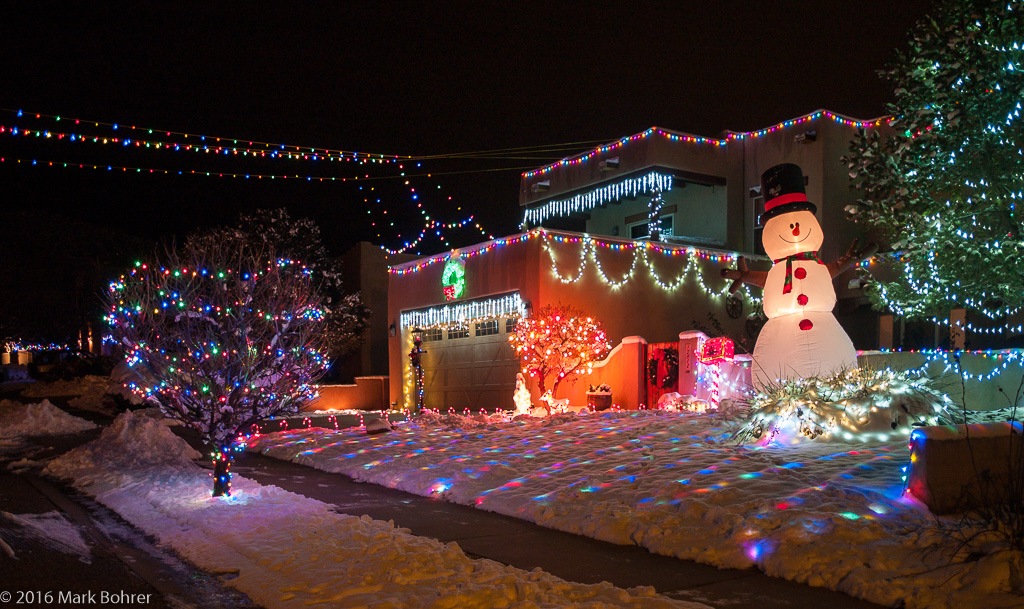 The Works, Albuquerque, New Mexico Shoot Your Local Lights In between the egg nog, Scottish ale and pound cake, I want to walk off some calories. Around my neighborhood, I’m guaranteed holiday lights rivalling some commercial displays. Use a Real Camera… I’ve been stuck with just a cellphone camera on a couple of these walks, but I try anyway. This guarantees me exposure problems, focusing problems, and camera shake problems. When I use a mirrorless or dSLR camera, I have more control and the results are much better. …And a Tripod I can crank up the ISO and hand-hold some of these shots if there are lots of lights and I brace against a wall, car or other natural support. But I’ll need to shoot with a wide-open lens aperture, so my depth of field will be limited. This might not matter too much if I focus on a close detail and let distant background lights go fuzzy. But a tripod guarantees shake-free shots at smaller apertures – giving more depth of field. 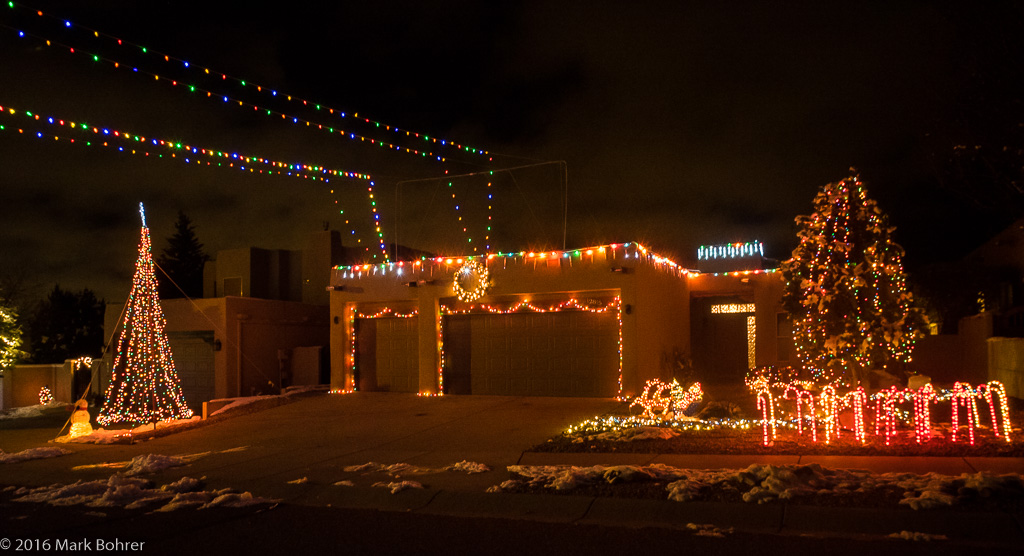 Across from The Works, Albuquerque, New Mexico The other thing to remember is that your camera’s meter wants everything to look like bright daylight. Holiday lights after sunset need underexposure to avoid turning night into day. And since you’re shooting very bright points of colored light in the dark, underexposure can help you avoid blowing them out into colorless blobs. I usually underexpose by anywhere from -2/3 to -2 stops. Digital cameras let you shoot different exposures and check the display on the spot. You can adjust your exposure up or down to get the scene your eyes see. 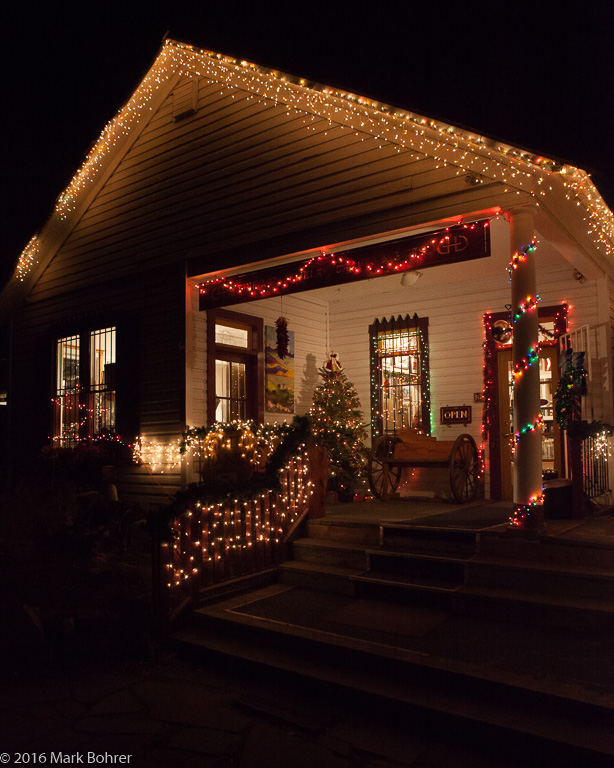 Holiday lights, Denver, Colorado I also shoot raw to get the widest possible contrast range. This helps keep me away from blown highlights or detailless darkness. Focus It A 2 1/2 or 3 inch LCD won’t show you what’s sharp, and you probably aren’t going to try to magnify small bits of it to check details when you’re standing in the cold and snow. What I do is choose my main focus point, either with the camera’s AF point or with manual focus. Usually, that’s an important foreground detail like Santa’s mailbox opening or the front of a light display. A tripod like my old Gitzo G-1127 mk II is small and light enough to carry, and lets me compose and hold that focus point’s position. 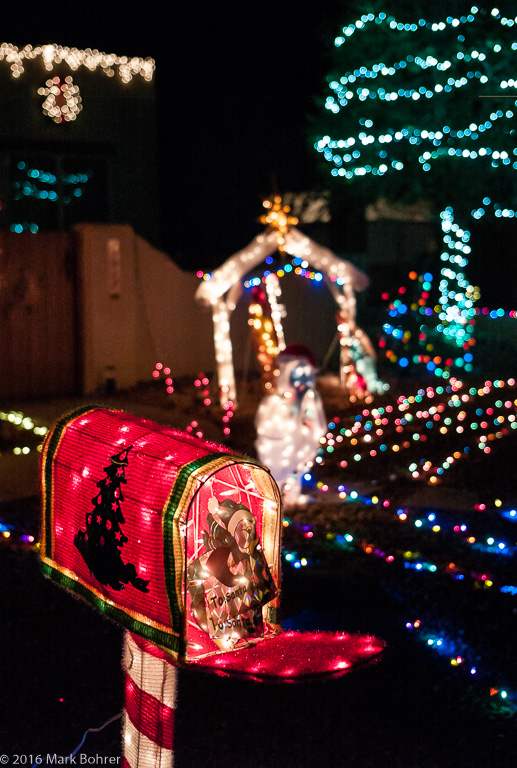 Santa’s mailbox, Albuquerque, New Mexico Which Lens? I usually shoot small pieces of larger subjects. But I go for shorter focal-length lenses with holiday lights. It’s similar to shooting architecture or ruins, so a wider choice isn’t too surprising – anywhere from 24mm to 35mm on a full-frame camera. This is one time where implying the whole from a small piece doesn’t work. You need to see most of it, the ensemble effect. I also enjoy public events and displays, like Santa Fe’s plaza lighting ceremony. These give you people in your pictures, and tell a better story. And my neighbor? He lit it even better this year. 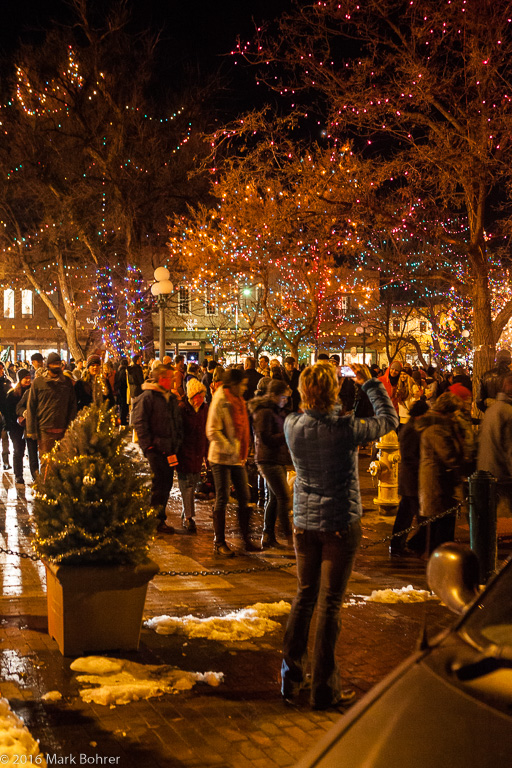 Tree lighting, Santa Fe Plaza, New Mexico 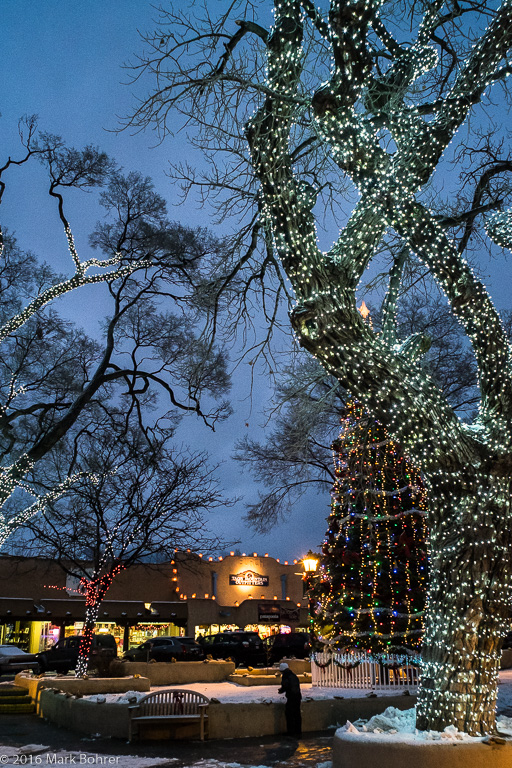 Taos plaza, New Mexico |
(408) 483-3782
Curious about how to shoot ruins?(408) 483-3782

Recent Comments